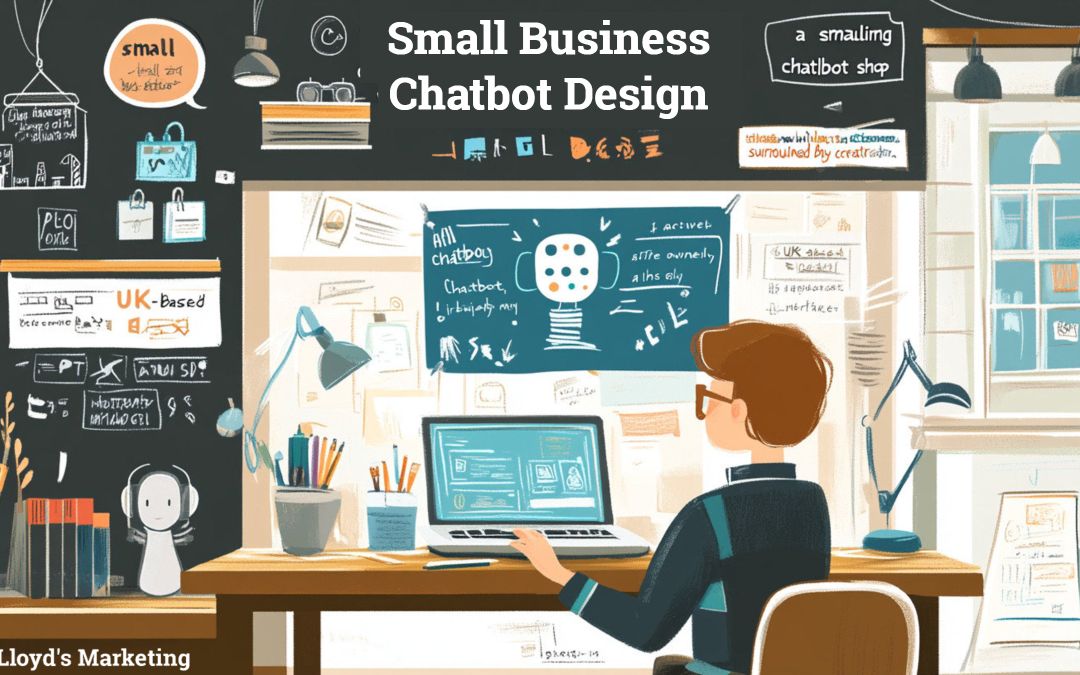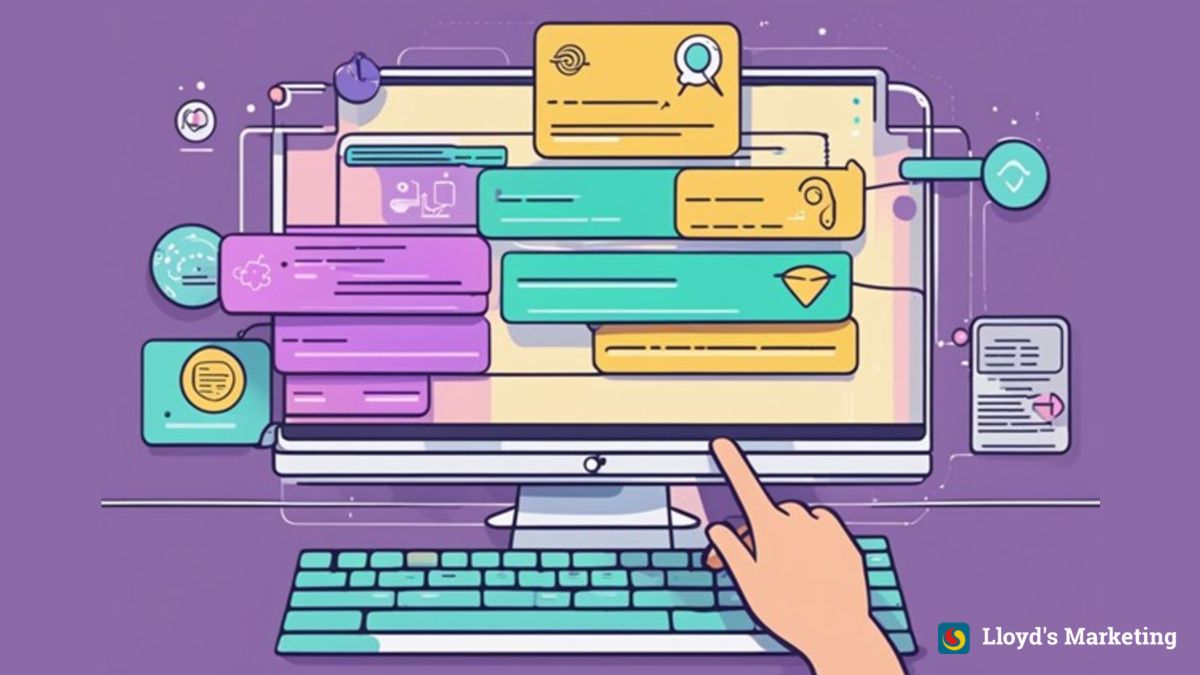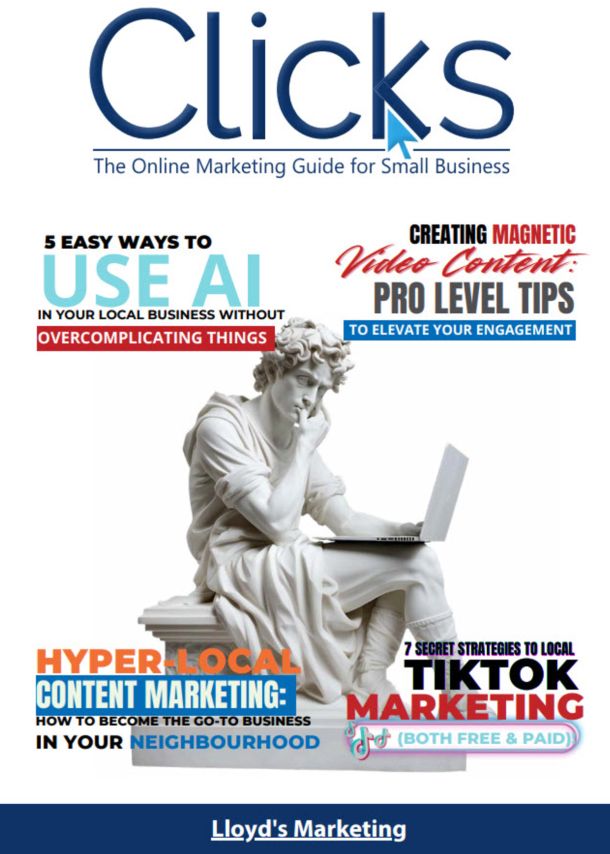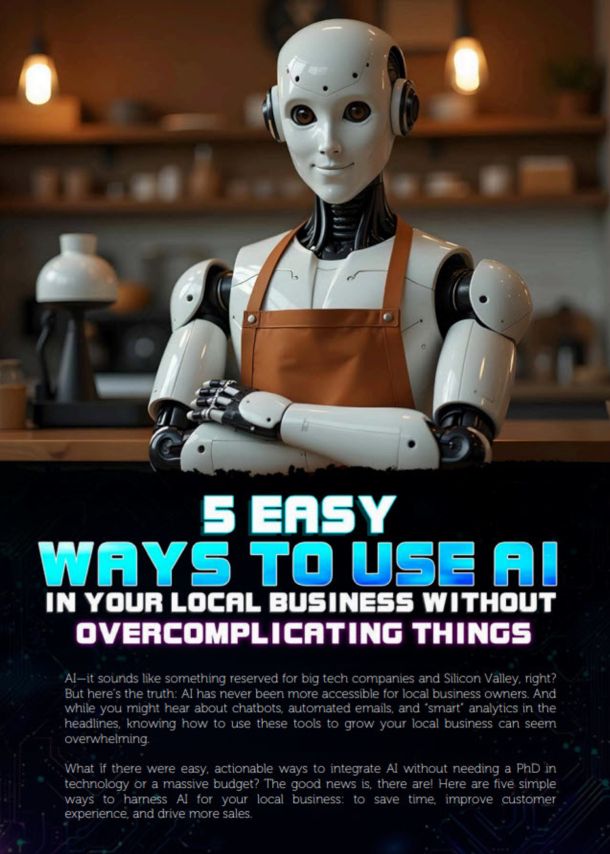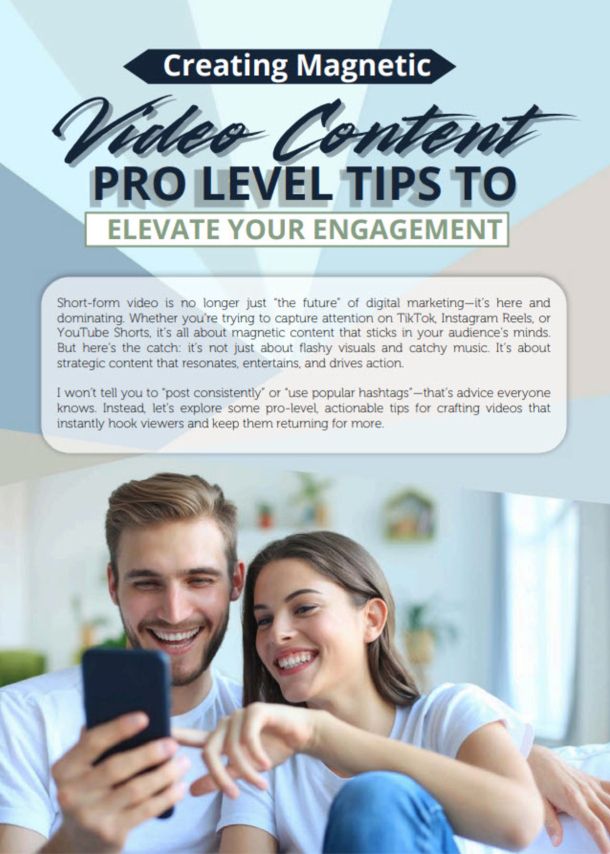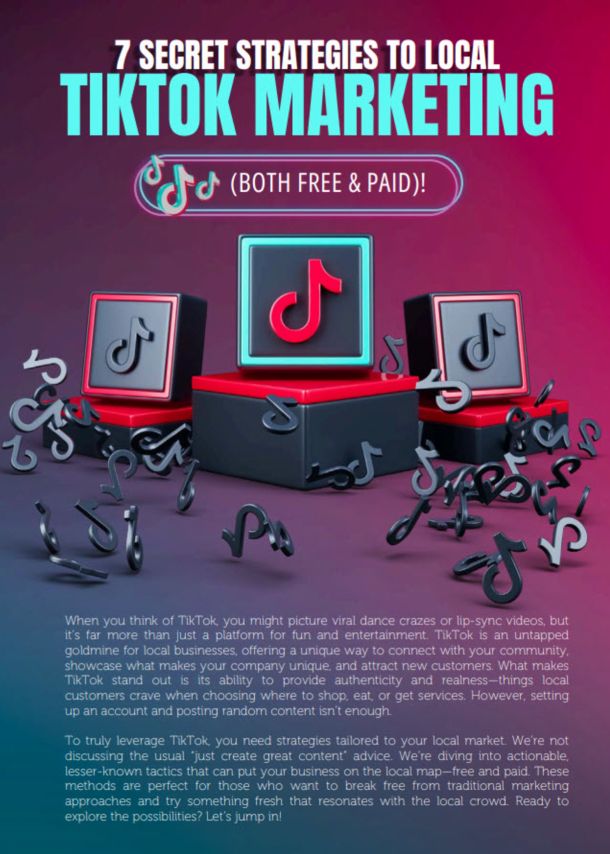Ready to bring your customer service into the 21st century but unsure where to start? Let’s dive into small business chatbot design together and create your first AI chatbot!
Table of Contents
Introduction
Designing an AI chatbot might sound like rocket science, especially if you’re new to the world of artificial intelligence. But fear not! With the proper guidance and a step-by-step approach, anyone—including you—can delve into small business chatbot design to enhance customer service, streamline operations, or even add fun to your business.
By the end of this guide, you’ll have a solid grasp of how to design your very own AI chatbot for your small business. So, grab a cuppa, and let’s get started!
Understanding AI Chatbots
What Exactly Is an AI Chatbot?
Think of an AI chatbot as your virtual assistant who never takes a day off. It’s a computer programme that uses artificial intelligence to simulate human conversations. By leveraging technologies like Natural Language Processing (NLP) and Machine Learning (ML), these chatbots can understand and respond to user queries naturally and engagingly.
They are a cornerstone of small business chatbot design, integrated into various platforms:
- Websites
- Messaging apps
- Social media platforms
- Mobile apps
Benefits of AI Chatbots for Small Businesses
Why should you consider small business chatbot design? Here are some compelling reasons:
- 24/7 Customer Support: Provide instant assistance to your customers anytime, anywhere.
- Cost-Effective: Reduce the need for additional staff to handle routine enquiries.
- Personalised Interactions: Tailor responses based on user preferences and behaviour.
- Scalable Solution: Handle multiple customer interactions simultaneously without breaking a sweat.
Common Use Cases
AI chatbots aren’t just for tech giants—they’re transforming small businesses across various industries:
- Retail: Assist customers with product recommendations and order tracking.
- Hospitality: Manage reservations and answer FAQs.
- Healthcare: Provide patients with appointment scheduling and basic medical information.
- Financial Services: Help customers with account enquiries and transaction details.
Planning Your Small Business Chatbot Design
Before jumping into the technical bits, planning your chatbot thoughtfully is crucial.
Setting Clear Goals and Objectives
First things first—what do you want your chatbot to achieve?
- Improve Customer Service: Reduce response times and enhance satisfaction.
- Increase Sales: Guide users through purchases with personalised recommendations.
- Automate Routine Tasks: Free up time by handling common enquiries.
Setting SMART (Specific, Measurable, Achievable, Relevant, Time-bound) goals gives you a clear roadmap for your small business chatbot design.
Identifying Your Target Audience
Understanding who will interact with your chatbot is key.
- Demographics: Age, location, language preferences.
- Behaviour: Online habits, common queries, pain points.
- Needs: What problems can your chatbot solve for them?
For example, if you own a boutique in London, your target audience might be fashion-conscious individuals aged 18-35 looking for the latest trends.
Determining Your Chatbot’s Functions
What exactly will your chatbot do?
- Answer FAQs
- Provide Product Information
- Assist with Bookings or Orders
- Offer Personalised Recommendations
Ensure these functions align with the goals you’ve set for your small business chatbot design.
Designing the Chatbot Experience
Now comes the fun part—designing how your chatbot will interact with users.
Crafting Conversational Flows
Think of this as mapping a conversation between your chatbot and a user.
- Start with Common Scenarios: List out typical user questions.
- Define Responses: Write clear, helpful replies.
- Plan for the Unexpected: Prepare for when the chatbot doesn’t understand.
Tip: Use flowcharts or mind maps to visualise the conversation paths in your small business chatbot design.
Building Your Chatbot’s Personality
Your chatbot should reflect your brand’s voice.
- Tone: Formal, friendly, quirky?
- Language: Use phrases your audience relates to.
- Name: Give your chatbot a memorable name.
For instance, “Bella the Boutique Assistant” could be a friendly helper for a fashion store.
Ensuring User-Friendly Interactions
Keep it simple and intuitive.
- Easy to Navigate: Users shouldn’t have to jump through hoops.
- Quick Responses: No one likes to wait.
- Clear Options: Provide buttons or quick replies where possible.
These elements are crucial in effective small business chatbot design.
Choosing the Right Tools and Platforms
You don’t need to be a coding genius to build a chatbot.
Comparing Chatbot Development Platforms
There are plenty of user-friendly platforms out there:
- Chatfuel: Great for Facebook Messenger bots.
- ManyChat: User-friendly with visual builders.
- Tars: Ideal for creating conversational landing pages.
Consider:
- Ease of Use
- Features
- Cost
- Integration Capabilities
Choosing the right platform is key to your small business chatbot design journey.
Selecting AI Technologies
For more advanced chatbots, you might delve into AI technologies like:
- Natural Language Processing (NLP): Helps the chatbot understand user inputs.
- Machine Learning (ML): Allows the chatbot to improve over time.
Platforms like Google’s Dialogflow or IBM Watson offer powerful tools with varying levels of complexity.
Integrating with Existing Systems
Ensure your chatbot can connect with your current setup:
- Website Integration
- CRM Systems
- E-commerce Platforms
This creates a seamless experience for you and your customers, enhancing your small business chatbot design.
Developing Your AI Chatbot
Let’s bring your chatbot to life!
Writing Effective Dialogues
Your chatbot’s responses should be:
- Clear and Concise: Keep messages short and to the point.
- Helpful: Provide valuable information.
- Engaging: Use a friendly tone.
Example:
User: “What are your opening hours?”
Chatbot: “Hi there! We’re open from 9 a.m. to 6 p.m., Monday through Saturday. Let me know if there’s anything else I can help with!”
Training the AI with Machine Learning
If you’re using AI capabilities:
- Provide Sample Data: Feed the chatbot example conversations.
- Use Supervised Learning: Correct it when it makes mistakes.
- Iterate: Continually improve based on interactions.
This is essential to small business chatbot design for more advanced functionalities.
Implementing Natural Language Processing
NLP allows your chatbot to understand and interpret human language.
- Keyword Recognition: Identify important words in user inputs.
- Intent Recognition: Understand what the user wants.
- Entity Recognition: Extract specific information (e.g., dates, locations).
Testing and Iterating
Don’t skip this crucial step!
Conducting User Testing
Get real users to interact with your chatbot.
- Friends and Family: Start small.
- Beta Testers: Invite a group of customers to try it out.
- Feedback Collection: Use surveys or direct feedback.
Analysing Feedback
Look for patterns in the input:
- Common Confusion Points
- Missing Information
- User Satisfaction Levels
Refining the Chatbot
Make necessary adjustments:
- Improve Responses: Clarify or expand where needed.
- Fix Errors: Address any technical glitches.
- Enhance User Experience: Simplify interactions if users seem lost.
This iterative process is vital in successful small business chatbot design.
Launching Your AI Chatbot
Time to go live!
Deploying the Chatbot
Choose where your chatbot will live:
- Website Chat Widget
- Facebook Messenger
- WhatsApp Business
- Mobile App
Follow platform guidelines for deployment to ensure a smooth launch in your small business chatbot design project.
Promoting Your Chatbot
Let the world know about your new assistant!
- Social Media Announcements
- Email Newsletter
- In-Store Promotions
Monitoring Performance
Keep an eye on:
- User Engagement: Are people using it?
- Common Issues: Any recurring problems?
- Goal Achievement: Is it meeting your objectives?
Maintaining and Updating
Your chatbot is not a set-it-and-forget-it tool.
Regularly Training the AI
Continue to improve:
- Update Responses: Based on new products or services.
- Train on New Data: Incorporate recent interactions.
Expanding Chatbot Capabilities
As your business grows, so can your chatbot.
- Add New Features: Like appointment booking or order tracking.
- Integrate with More Platforms: Reach users where they are.
Ensuring Continuous Improvement
Regularly review performance metrics:
- User Satisfaction
- Response Accuracy
- Conversion Rates
Make adjustments as needed to keep your small business chatbot design effective.
UK Case Study: The Success of “BrewBot” in Small Business Chatbot Design
To illustrate how impactful small business chatbot design can be, let’s look at The London Coffee Company.
The Challenge
They faced:
- High Volume of Repetitive Enquiries: Opening hours, menu items, location.
- Limited Staff Resources: Couldn’t always respond promptly.
The Solution
They designed “BrewBot”, an AI chatbot integrated into their website and Facebook Messenger.
- Functions:
- Answer FAQs.
- Provide menu information.
- Make reservations for their coffee-tasting events.
The Results
- Increased Customer Engagement: Users enjoyed interacting with BrewBot.
- Reduced Response Times: Immediate answers to common questions.
- Boosted Event Attendance: The simplified booking process led to more reservations.
This success story highlights the benefits of thoughtful small business chatbot design.
AI Prompts to Get You Started
Not sure where to begin? Here are some prompts you can use:
- ChatGPT, guide me through the initial steps of small business chatbot design for a boutique retail store.
- ChatGPT, suggest effective ways to map out conversation flows in small business chatbot design.
- ChatGPT, help me identify key functionalities my AI chatbot should have for customer support.
- ChatGPT, discuss the role of user feedback in refining small business chatbot designs.
- ChatGPT, provide tips on how to test and validate AI chatbot interactions before launch.
Conclusion
Embarking on small business chatbot design doesn’t have to be daunting. With a clear plan, the right tools, and a willingness to learn and adapt, you can create a chatbot that meets your business goals and delights your customers.
So, are you ready to join the chatbot revolution? Your virtual assistant awaits!
Are you excited to build your own chatbot? Stay tuned for our upcoming posts, where we’ll delve deeper into each topic.
Don’t miss out on our 30-part AI Chatbot Marketing series! Visit our Pillar Post to explore all topics and stay ahead of the curve.
Ready to revolutionise your business with AI chatbots? Subscribe to Clicks, our monthly online marketing guide for small businesses. Each issue is packed with practical tips, industry insights, and strategies to help you navigate the digital marketing landscape effectively.
Don’t miss out on our upcoming blog posts and the wealth of information in Clicks. Subscribe now and stay ahead in the ever-evolving world of online marketing.

